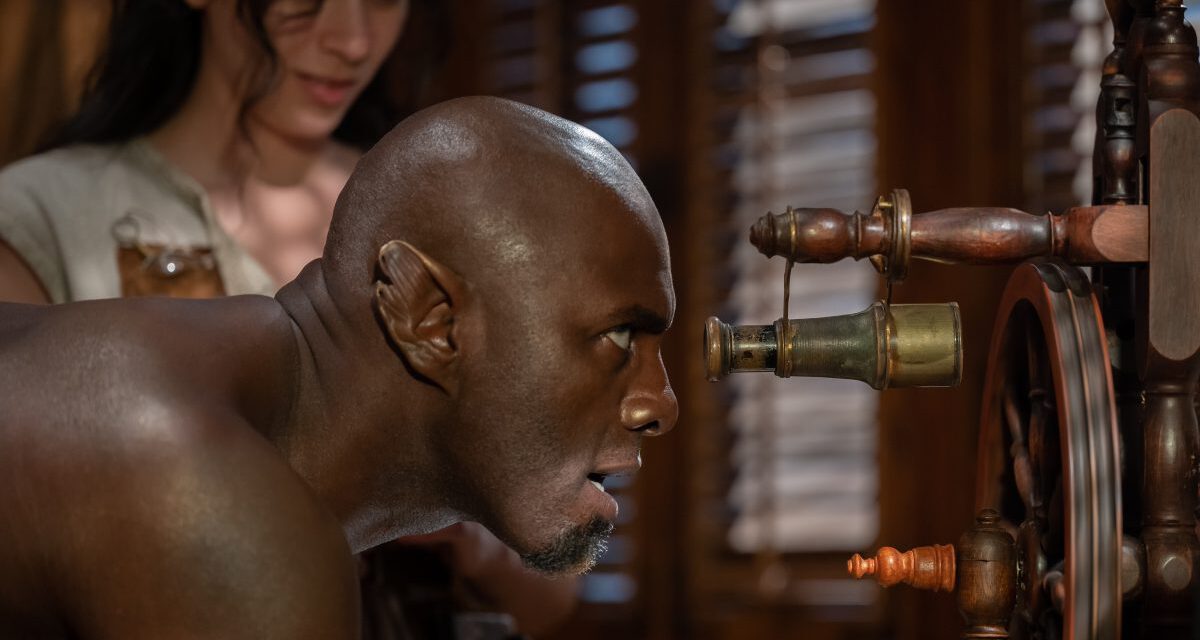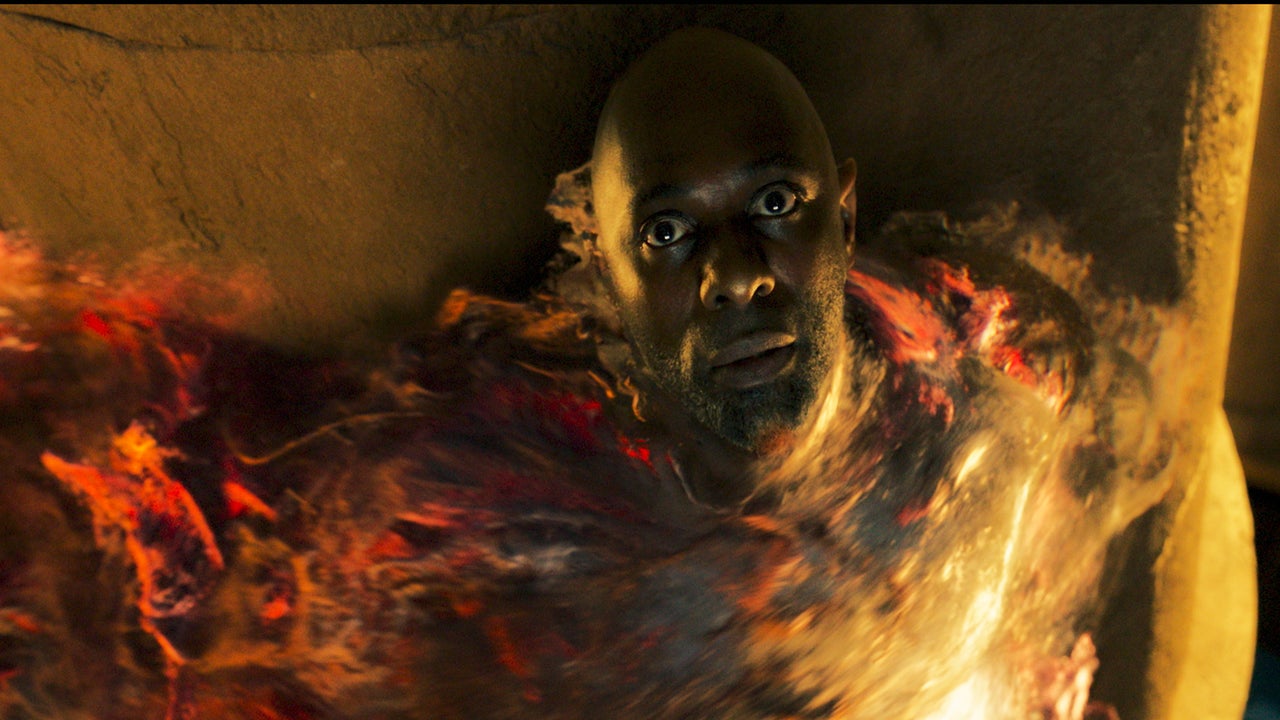Tilda Swinton may have played a character called the Ancient One, but she’s not the one who experiences the titular millennia of romantic ennui in George Miller’s Three Thousand Years of Longing. In a way, she does, since she absorbs the woeful tales of a djinn (Idris Elba) released from a bottle she buys in an Istanbul bazaar. It’s an interesting tale for Miller to tell, as the first feature he’s directed since Mad Max: Fury Road – one that is vivid and visionary in some parts, stiff in others.
Swinton plays Alithea Binnie, a British literary scholar in town for a conference, where she is speaking to an audience on the intersection between science and myth. The two intersect right there during her lecture, as she sees the shimmering spectral image of some sort of demon in regalia listening from the back of the auditorium, and then the third row. It’s not the first time this has happened to Alithea, but it’s the most overwhelming, as she faints and has to be roused by the other academics. How much this incident is related to the events that follow is probably in the eye of the beholder.
As a souvenir, Alithea selects a glass bottle with blue stripes from a bin of unsorted artefacts at a shop in the bazaar. What emerges, as she’s cleaning it with an electric toothbrush, is the first sign that we’re in the presence of a dynamic vision from Miller. Blue and purple smoke emanates from the bottle, and in a matter of moments, an entity follows. This creature is so big it can barely fit in her hotel room, and speaks an ancient dialect that Alithea only recognises because of a university class she took 30 years ago. Unfamiliar with modern inventions like the television, the djinn extracts an image of Albert Einstein from the glowing box, asking if Alithea is a witch for imprisoning this man. In his palm he twirls the miniature Einstein, who seems none too pleased about it.
As the djinn shrinks to a more manageable size and quickly learns the less exotic language of English, so too does the movie shrink and become inevitably less exotic. We begin spending quite a lot of time with Alithea and the djinn in matching white terrycloth bathrobes, as he walks her through the last three thousand years of his life. Elba still has pointy ears, maybe the mixture of a Vulcan and an elf, and he’s sporting a red soul patch. Still, it’s something of a comedown from his room-filling presence just moments before.
The lion’s share of the movie is a mixture of these stilted conversation sequences and stories from the djinn’s ancient past. The conversations aren’t stilted because of the actors’ technique; we’re talking about two of the more engaging screen presences working today. Rather, the modern-day material has an inertness built into it, relying so little on action as it does. A viewer is reminded of the long – like four-hour long – exchange between the leads in Lars von Trier’s two Nymphomaniac movies, at least broken up here by more innocuous narrative components.
The djinn’s stories, though, are lovingly shot, costumed and set designed vignettes detailing how the djinn was thrice imprisoned in various bottles. The movie comes alive in these sequences. It turns out the djinn was once the romantic plaything of the Queen of Sheba before a jealous suitor used his magic to trap him in a bottle that ended up at the bottom of the Red Sea for more than two millennia. When Alithea asks what he spent all that time doing, other than sleeping, the djinn reveals that his kind don’t sleep. Evidently, they also don’t go insane during unfathomable amounts of waking hours in cramped quarters.
The odyssey continues through various other kingdoms and time periods in this region of the world, including a stretch when the djinn spends a century outside his bottle, having turned invisible due to his current master’s failure to make her third wish before her death. In this way, not only does it continue to dazzle us with its production design and its periodic display of the djinn’s magic, it also encourages us to contemplate the impotence of even the most powerful immortal beings when the twists and turns of fate handle them cruelly. As anyone who’s ever heard a genie story knows, those three wishes often sentence the wisher to a perverse sort of damnation. As we learn in Three Thousand Years of Longing, the genie himself might also fall victim.
We learn a lot about this djinn, all of it entertaining and much of it melancholy. Crucially, we learn very little about Alithea. Screenwriter Augusta Gore’s adaption of the short story “The Djinn in the Nightingale’s Eye,” by A.S. Byatt, would benefit from giving the characters a more equal share of the storytelling. Alithea seems designed as something of a cipher, as she tells the djinn she has no parents, no children, and only an ex-husband we don’t learn anything about. Effectively, she’s a blank slate, and that does inform some of her subsequent actions in the story. Given that she narrates and is the first character we meet, with the djinn only coming into the story after 15 minutes, it seems like a missed opportunity not to flesh her out.
There’s such creativity on display in Three Thousand Years of Longing, though, that it ends up a worthwhile way for Miller to ply his visual gifts as a change of pace between Mad Max movies. (The spinoff Furiosa is due in 2024). At age 77, the Australian director still has the desire to see what he can do, and a new desire to see what digital effects can do for his storytelling. Having famously not used much digital trickery in Mad Max: Fury Road, Miller integrates it seamlessly here. And because the person employing those digital tricks is using them in fresh ways, Miller’s movie feels like the product of a fertile imagination, rather than the latest CGI blur off the Marvel assembly line.
Three Thousand Years of Longing is currently playing in cinemas.



